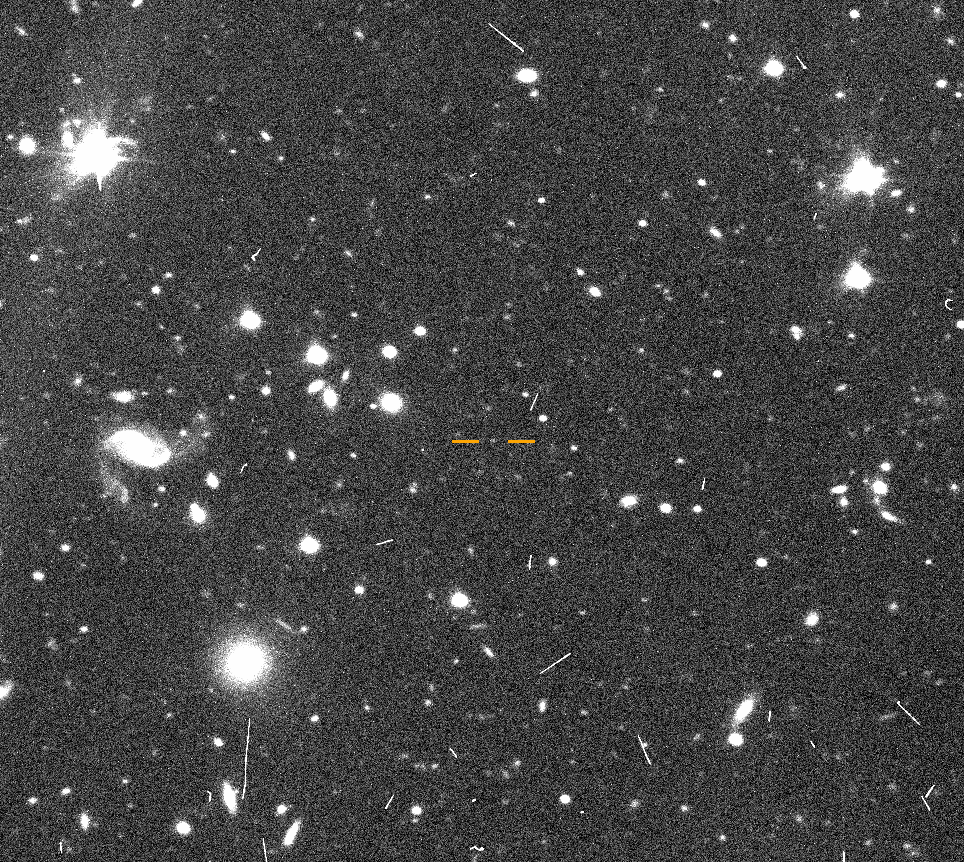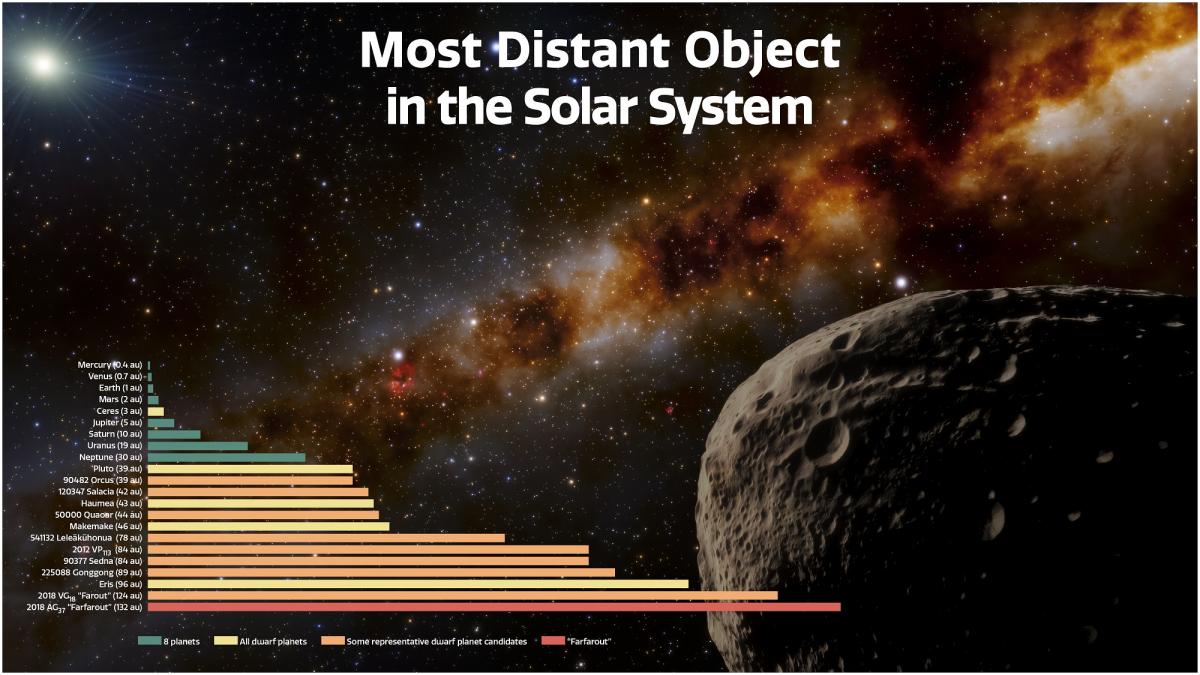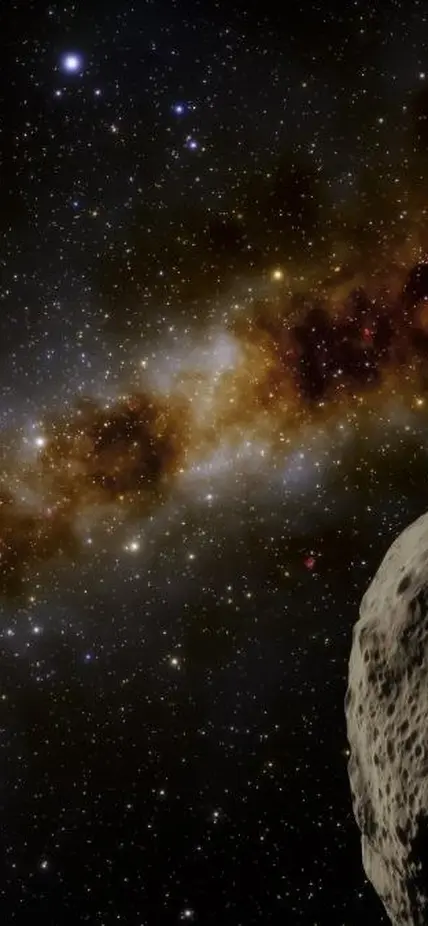Washington, DC—A team of astronomers, including Carnegie’s Scott Sheppard, David Tholen from the University of Hawaiʻi Institute for Astronomy, and Chad Trujillo from Northern Arizona University have discovered discovered the most distant object ever observed in our Solar System.
Officially called 2018 AG37, the object is nicknamed Farfarout for just how far away from the Sun it is orbiting—about 132 AU, where 1 AU is the distance between the Earth and Sun. At that distance, it takes an entire millennium to orbit the Sun.
The three colleagues have been surveying the sky since 2012 to map the Solar System beyond Pluto. FarFarOut joins a set of these planetoid discoveries—including the previous record holder, FarOut at 124 AU, which was also discovered by Sheppard, Tholen, and Trujillo. However, they are still on the hunt for “Planet X”—a much larger planet that could be orbiting somewhere on the Solar System's fringes.
Farfarout’s journey around the Sun takes about 1,000 years, crossing the giant planet Neptune’s orbit every time. This means Farfarout has probably experienced strong gravitational interactions with Neptune over the age of the Solar System—the reason it has such a large and elongated orbit.
"A single orbit of Farfarout around the Sun takes a millennium", said Tholen. "Because of this long orbital, it moves very slowly across the sky, requiring several years of observations to precisely determine its trajectory."
Farfarout is very faint, and based on its brightness and distance from the Sun, the team estimates its size to be about 400 kilometers across, putting it on the low end of being a dwarf planet assuming it is an ice-rich object.
"The discovery of Farfarout shows our increasing ability to map the outer Solar System and observe farther and farther towards the fringes of our Solar System", said Sheppard. "Only with the advancements in the last few years of large digital cameras on very large telescopes has it been possible to efficiently discover very distant objects like Farfarout. Even though some of these distant objects are quite large, being dwarf planet in size, they are very faint because of their extreme distances from the Sun. Farfarout is just the tip of the iceberg of Solar System objects in the very distant Solar System."

Only objects that stay in the very distant Solar System, well beyond the gravitational effects of Neptune, can be used to probe the very distant Solar System for the signs of another massive planet. These include objects like Sedna and 2012 VP113, nicknamed Biden. Although they are currently closer to the Sun at around 80 AU, they never approach Neptune in their orbits around the Sun and thus would be strongly influenced not by Neptune but more by other possible massive objects in the distant Solar System, like the possible Planet X.
"Farfarout’s orbital dynamics can help us understand how Neptune formed and evolved, as Farfarout was likely thrown into the outer Solar System by getting too close to Neptune in the distant past", said Trujillo. "Farfarout will likely strongly interact with Neptune again since their orbits continue to intersect."
Farfarout was discovered at the Subaru 8-meter telescope located atop Maunakea in Hawaiʻi. To determine Farfarout’s orbit based on its slow motion across the sky, the team used the Gemini North telescopes, also on Maunakea, and Magellan telescopes at Carnegie’s Las Campanas Observatory in Chile.

